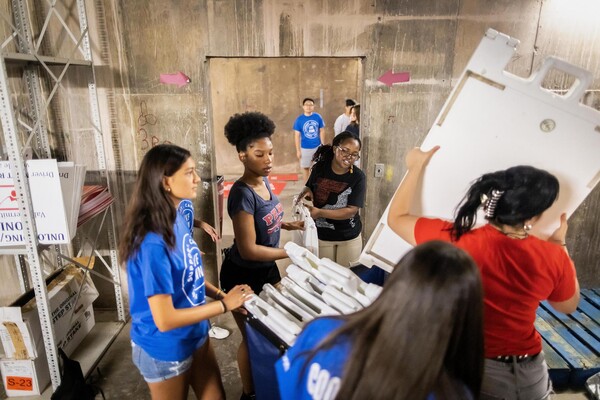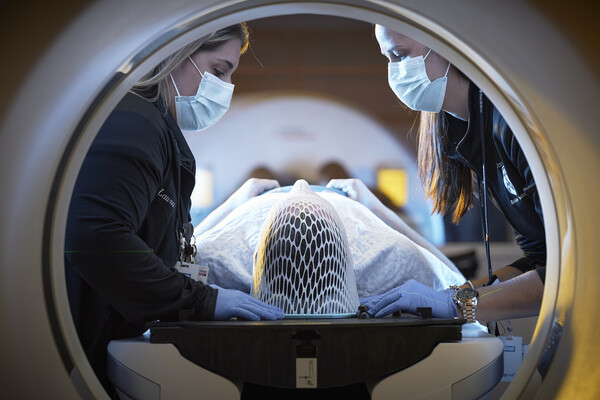Welcome to Penn, the virtual version
Dennis Culhane likes to map things. As faculty director of the Cartographic Modeling Lab, the associate professor of social welfare policy has mapped housing trends, homelessness, social services and entire neighborhoods using advanced geographic information system technology—and a lot of legwork.
Last year, he saw something that piqued his interest: a virtual 3-D model of Center City that, with a few clicks of the mouse, took the user on a minutely detailed tour through every street, alley and boulevard of the downtown area.
Culhane saw this as an “excellent piece of technology to bring to the University,” and began working with the model maker, Tel Aviv-based GeoSim Systems, to create a virtual University City.
Throughout the winter months—perhaps you noticed them—small vans pulling trailers loaded with camera equipment made their way up and down the campus streets and pedestrian paths, snapping pictures as they went. A plane flew over the area, too, capturing additional images. Now the data has been gathered, says Culhane, GeoSim will create a “box model” or 3-D map, with every building and structure in place. After that, surface details will be “attached” to the model and finally textures—brick, glass, stone, etc.—and landscape features will be applied for maximum verisimilitude.
Once it’s up and running, which could happen as early as this fall (though much depends on funding), Virtual University City is sure to provide hours of fascinating desktop strolling. But Culhane sees academic potential, too. Penn’s Center for Human Modeling and Simulation, he says, could use the 3-D database as a virtual environment for crowd simulation and other spatial experiments. In the School of Design, the building simulation group run by architecture professor Ali Malkawi could use the model to explore the movement of people in buildings and the thermal dynamics of structures.
Also, says Culhane, it will be a useful tool to introduce potential students to the campus and reacquaint alumni with their ever-evolving alma mater. The model could very effectively simulate changes that would occur on the eastern part of campus as the recently acquired “postal lands” are developed, he says, and Public Safety could link its closed-circuit TV cameras into this virtual environment to more accurately pinpoint where crimes are occurring. Retailers and landlords, too, could use the technology to pitch their properties to potential tenants or customers.
The ability to create this kind of virtual world isn’t new, says Culhane, but GeoSim has “compressed the time and created efficiencies in cost, so it’s a tenth of what it used to cost and it takes a fifth of the time.”
Penn will be the first university campus with a virtual counterpart, but it won’t be the last, says Culhane. “Once Penn is out there with this technology, you’ll see a lot of other places who’ll want to do the same thing.” Its success, he says, hinges on coming up with useful applications. “And we have all the different things a growing campus might have—some real building expansion, public safety issues, a large body of alumni and a big potential student constituency. ”
To track the progress of Virtual University City, go to www.virtualuniversitycity.com.







